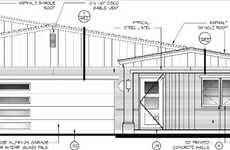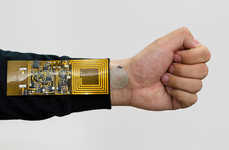
S-Squared 3D Printers Printed a Prototype Home in Just 12 Hours
Michael Hemsworth — August 21, 2019 — Art & Design
References: printyourfuture & newatlas
This prototype home was printed by S-Squared 3D Printers as an example of what can be accomplished in the architectural market using the power of 3D printing technology. The basic home was printed in just 12 hours and features 500 square feet of interior space, which identifies the inherent possibilities of printing homes instead of erecting them through conventional methods. The home was printed by the company as an experiment that tested out a number of different functionalities of its printing equipment, while also allowing the team to see what methods might work best.
The prototype home from S-Squared 3D Printers comes as the brands first foray that is hoped to lead to another larger building that will be suitable for occupation. Further down the line the firm hopes to scale its architectural 3D printing up for local residential housing solutions and even humanitarian housing.
Image Credit: SQ3D
The prototype home from S-Squared 3D Printers comes as the brands first foray that is hoped to lead to another larger building that will be suitable for occupation. Further down the line the firm hopes to scale its architectural 3D printing up for local residential housing solutions and even humanitarian housing.
Image Credit: SQ3D
Trend Themes
1. 3D Printed Buildings - Increased use of 3D printing technology for construction of buildings creates a disruptive innovation opportunity for the construction industry.
2. Architectural 3D Printing - The development and improvement of architectural 3D printing technology for designing and creating cost-effective, sustainable homes create a disruptive innovation opportunity for the architecture and engineering industries.
3. 3D Printed Humanitarian Housing - 3D printing technology can be leveraged to create unique, affordable housing solutions for disaster relief and humanitarian efforts, creating a disruptive innovation opportunity for the humanitarian aid industry.
Industry Implications
1. Construction - The construction industry can leverage 3D printing technology to create faster, more efficient building processes while also reducing costs and improving sustainability.
2. Architecture and Engineering - Architects and engineers can use 3D printing technology to create more innovative and sustainable housing designs while also improving the speed and efficiency of construction processes.
3. Humanitarian Aid - The use of 3D printing technology can assist in providing affordable housing solutions for areas impacted by natural disasters and conflict, enabling humanitarian organizations to help those in need more effectively.
6.7
Score
Popularity
Activity
Freshness























